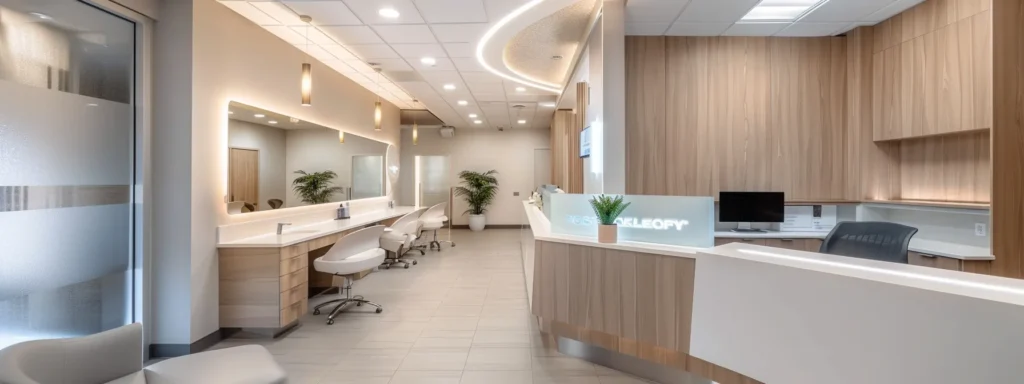Decision criteria for escalating care in managing your child’s OSA must consider case severity, your child’s growth phase, and response to initial treatments. Understanding when to seek additional help becomes crucial for your child’s health and development.
Indications for polysomnography, specialist referrals, and oral appliance therapy considerations must be evaluated alongside ongoing monitoring. Oral appliances should be reassessed at regular intervals, particularly during growth periods, and adjusted as necessary to maintain effectiveness.
Metrics such as AHI reduction and oral anatomical improvements provide objective measures for assessing treatment success. These measurements help determine if current treatments are working or if modifications are needed for better outcomes.
The importance of clear decision making in your child’s care cannot be overstated since early intervention often leads to better long term results and fewer complications as your child continues growing.
Establishing Clear Care Enhancement Criteria
Effective management of pediatric obstructive sleep apnea hinges on clear decision making processes that put your child’s health first. When considering escalating care, it’s essential to evaluate three critical factors for optimal outcomes.
Assessing symptom severity proves vital and includes observing frequency and intensity of apnea events during your child’s sleep. If your child demonstrates persistent, severe apnea episodes despite previous interventions, this necessitates more aggressive treatment approaches.
Your child’s growth phase significantly influences the type and timing of treatment adjustments needed. During growth spurts, oral appliances may require modifications to accommodate changes in jaw structure while maintaining proper alignment for continued effectiveness.
Monitoring your child’s response to initial treatments offers gauges for treatment effectiveness. Consistent improvement, noted by apnea hypopnea index reduction or oral structure enhancements, dictates continuation or alteration of current treatment plans.
Early Detection Makes All the Difference
Dentists play pivotal roles in early recognition of pediatric obstructive sleep apnea, a condition that frequently goes undetected yet poses serious health risks to children. Early detection gets broken down into awareness, screening, and intervention impact.
Symptom awareness by dental professionals represents the first key aspect since dentists can notice subtle pediatric OSA indications like habitual snoring or breathing pauses during routine interactions. This awareness enables flagging potential cases that might otherwise go unnoticed.
Routine screening integration during dental checkups allows examination of children’s mouths for anatomical risk factors, specifically narrow palates or enlarged tonsils. These routine checks prove essential because they occur before OSA leads to serious health consequences.
Timely intervention impact involves dentists referring patients for further evaluation or beginning early dental treatments once potential risk factors get identified. Quick action significantly improves both immediate sleep quality and long term health potential.
Addressing Jaw and Facial Structure Issues
Dentists prove crucial in early identification and treatment of craniofacial abnormalities that cause pediatric obstructive sleep apnea. Intervention effectiveness relies on recognizing specific abnormalities, implementing appropriate treatments, and understanding treatment impacts for better management.
Recognizing specific craniofacial abnormalities that contribute to OSA represents the first step since narrow jawlines can lead to airway restriction. During dental exams, dentists examine these structural concerns by looking at alignment and spacing within your child’s mouth.
Craniofacial abnormality management combines multiple treatment approaches to address structural issues that contribute to pediatric sleep apnea while ensuring comfort and compliance:
- Specific abnormality recognition through examination of jaw alignment, palate width, and tooth positioning that can contribute to airway restriction
- Orthodontic solution implementation including expanders to widen palates and oral appliances to reposition jaws for preventing airway blockages
- Treatment impact assessment that monitors airway expansion and blockage prevention for improved sleep patterns and quality of life
- Anatomical obstruction targeting with treatments chosen based on how they address specific structural problems while considering child comfort
- Long term health monitoring that ensures early intervention reduces OSA severity while supporting normal growth and cognitive development
Upon identifying abnormalities, dentists proceed to implementing appropriate treatments like orthodontic expanders to widen palates or oral appliances to reposition jaws. Each treatment gets chosen based on addressing specific anatomical obstructions.
Understanding What Causes Your Child’s Sleep Apnea
Precise identification of underlying obstructive sleep apnea causes in children shapes treatment direction. Whether due to malocclusion or adenotonsillar hypertrophy, specific intervention strategies become evident through examining oral structure, assessing soft tissue, and defining treatment paths.
Malocclusion, the first cause, refers to teeth misalignment affecting jaw structure and airway space. Dentists must scrutinize dental arch, bite relationship, and tooth positioning during children’s dental checkups for signs requiring corrective treatment.
Adenotonsillar hypertrophy involves adenoid and tonsil enlargement contributing to airway obstruction. Unlike malocclusion requiring dental treatments, adenotonsillar hypertrophy gets handled medically or surgically through ENT specialist referrals for evaluation.
Defining appropriate treatment paths relies on distinguishing between these causes. Dentists choose correct directions for malocclusion beginning orthodontic care, while adenotonsillar hypertrophy requires collaboration with medical professionals for optimal outcomes.
Supporting Your Child’s Development Through Treatment
Effectively managing pediatric obstructive sleep apnea proves essential for safeguarding your child’s developmental journey. Dental professionals get tasked with addressing cognitive, emotional, and physical repercussions brought on by this condition through strategic interventions.
Cognitive growth can be impeded by OSA since sleep quality disruption affects your child’s ability to concentrate and learn. Dental professionals need to recognize cognitive delay signs like academic struggles or decreased attention spans.
Emotional growth concerns involve lack of restful sleep leading to mood swings, behavioral problems, and anxiety in children. By providing OSA treatment, dentists play roles in stabilizing emotional development through proper appliance use counseling.
OSA can also impede physical growth by interfering with hormone cycles and causing general fatigue. Dental professionals assess physical symptoms like sluggishness or growth delays while offering treatments that restore proper sleep cycles.

Optimizing Your Child’s Sleep Apnea Management
Dentists serve as first responders in battles against pediatric obstructive sleep apnea, utilizing three part approaches that include implementing screenings, providing suitable treatments, and fostering collaborative care for comprehensive management.
Screening initiation during dental exams represents critical first steps through integrating specific questionnaires and visual assessments revealing OSA signs like consistent snoring or breathing pauses. These non invasive tools identify conditions early.
Comprehensive pediatric OSA management combines multiple treatment approaches and collaborative strategies to ensure optimal outcomes for your child’s health and development:
- Early screening implementation through dental exam questionnaires and visual assessments that reveal OSA signs for timely intervention
- Appropriate treatment provision including oral appliance therapy as CPAP alternatives that enhance comfort and compliance for better adherence
- Collaborative care fostering with medical experts including pediatricians and sleep specialists for holistic treatment plan development
- Non invasive tool application that identifies conditions in infancy while allowing timely interventions and reducing complex treatment needs
- Synergistic approach coordination that ensures your child’s unique medical and dental needs get addressed for optimized wellbeing outcomes
Providing appropriate treatments represents second crucial elements since dentists can offer oral appliance therapy as alternatives to CPAP machines for mild to moderate OSA cases. These appliances get tailored to individual anatomical needs.
Evaluating Your Child’s Progress
Effective pediatric obstructive sleep apnea management demands comprehensive assessment strategies comprising OSA severity monitoring, growth and development assessment, and initial treatment response evaluation. Each factor proves pivotal in determining necessary care plan adjustments.
Systematic OSA severity tracking proves crucial since apneic event frequency and intensity indicate condition progression. Clinicians use objective tools like Apnea Hypopnea Index to quantify these occurrences for treatment decisions.
Recognizing your child’s developmental stage proves essential since children undergo rapid physical and dental changes requiring frequent oral appliance adjustments. During growth periods, dentists ensure appliances continue providing therapeutic value without compromising comfort.
Initial treatment response evaluation should be meticulous since children not showing expected improvements or experiencing symptom worsening require treatment plan revisions. Dentists must remain flexible while adapting therapeutic strategies.
Supporting Your Family Through the Journey
Supporting families dealing with pediatric obstructive sleep apnea involves three key areas: dental practice services, educational resources, and coordinated healthcare pathways. Each area plays critical roles in equipping families to navigate OSA treatment complexities.
Direct dental practice support provides families with in depth assessments for accurately diagnosing OSA. Follow up visits ensure prescribed treatments like oral appliance fitting stay effective over time through regular monitoring and adjustment.
Educational resources form support pillars by providing families with necessary information for understanding OSA. Professional organizations publish easy to understand guides explaining symptoms, treatment options, and early intervention importance for informed decision making.
Integrated care pathways represent support elements facilitating collaboration among various healthcare providers including dentists, pediatricians, and sleep specialists. Such coordination ensures unified approaches to managing your child’s OSA with tailored treatment plans.
Maintaining Treatment Success Over Time
To ensure ongoing success in treating pediatric obstructive sleep apnea, structured approaches focusing on dental maintenance, lifestyle adaptations, and healthcare communication prove vital. Addressing these areas proactively helps sustain positive OSA treatment outcomes.
Regular dental appointments form cornerstones of maintaining successful OSA treatment since checkups allow dentists to examine oral appliance fit and functionality while making necessary adjustments. Correcting fit issues helps maintain unobstructed airways.
Lifestyle guidance provides crucial adjuncts to direct dental care through family strategies supporting your child’s treatment outside dental offices. Tips for appliance care and sleep hygiene enhance overall OSA management effectiveness.
Clear communication between dental and medical practitioners offers support layers ensuring all your child’s health aspects get considered. Collaborative relationships enable timely identification and management of new or evolving risk factors.
Ensuring Your Child Gets the Best Care
Pediatric obstructive sleep apnea management centers on timely interventions, comprehensive treatment strategies, and community support. Dental professionals play integral roles in each aspect, significantly enhancing care quality for children with OSA.
Proactive intervention represents initial effective OSA management facets since dentists often first notice OSA signs during routine visits while promptly initiating assessments. Early diagnosis provides interventions before conditions escalate into severe health issues.
Comprehensive treatment strategies form management cornerstones including physical dental device application and treatment plan adaptation over time. Collaboration with healthcare specialists creates multidisciplinary teams addressing varied children’s OSA needs.
Your child’s sleep and development are too important to leave to chance when effective dental solutions are available. Contact a qualified pediatric sleep dentist today to discuss screening options and treatment solutions that can help your child sleep better and develop properly.
Book Your Consultation Today!
Dr. Bethaney B. Brenner DMD
8 Milford St, Burlington, CT 06013
Frequently Asked Questions
How can dentistry help with my child’s sleep apnea?
Dentists play critical roles in treating pediatric OSA by identifying early signs and providing non surgical treatments, such as specialized oral appliances, that help keep your child’s airway open during sleep for better rest and development.
Is pediatric sleep apnea serious?
Yes, pediatric sleep apnea is a serious condition that can impact your child’s cognitive, emotional, and physical development. Early dental interventions can provide significant improvements in your child’s sleep quality and overall health outcomes.
Will my child outgrow sleep apnea, or is treatment necessary?
It’s a misconception that children outgrow sleep apnea without treatment. Timely dental interventions are essential to manage the condition and prevent long term developmental issues that can affect your child’s future quality of life.





